Hana Island Agency- front view
Hana Island Agency- view from right coner
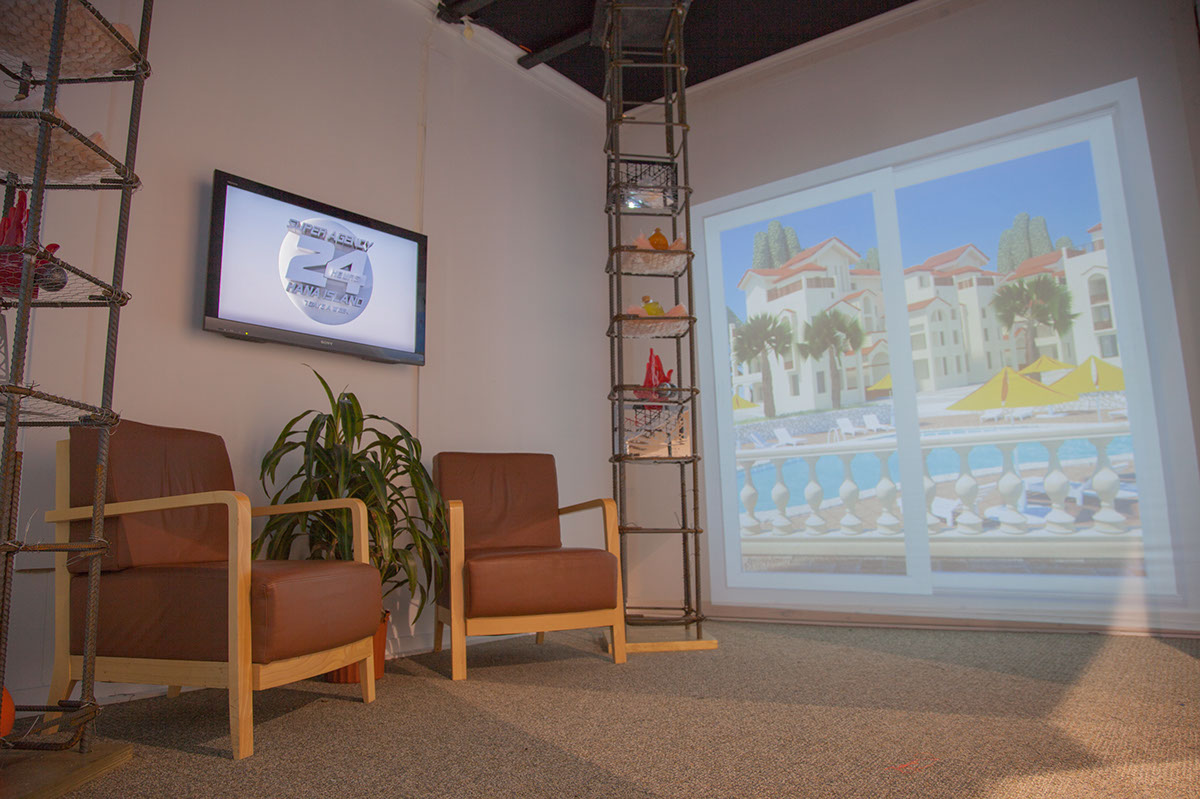
Hana Island Agency- view from left coner
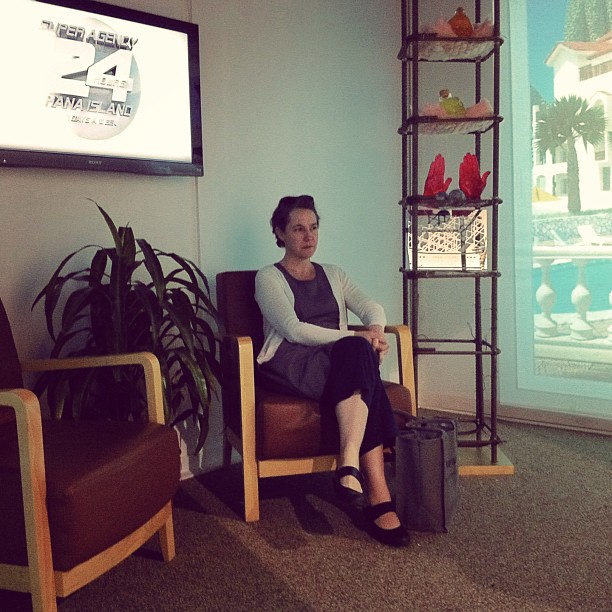

Post card-1 Hana Island
Hana Island Super Agency Productions
Hana Island Super Agency Productions
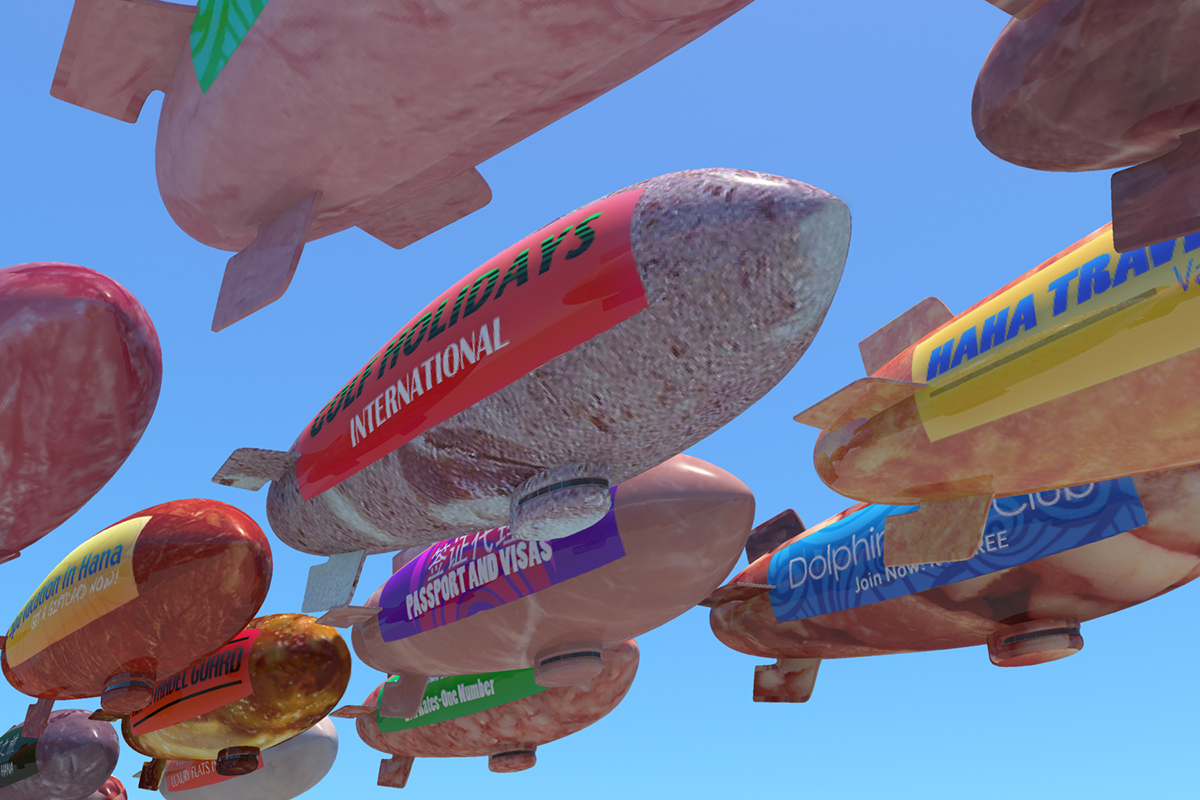
Post card-2 Better Taste,Better Choice
Hana Island Super Agency Productions
Hana Island Super Agency Productions

Post card-3 Faster,Deeper,Stronger
Hana Island Super Agency Productions
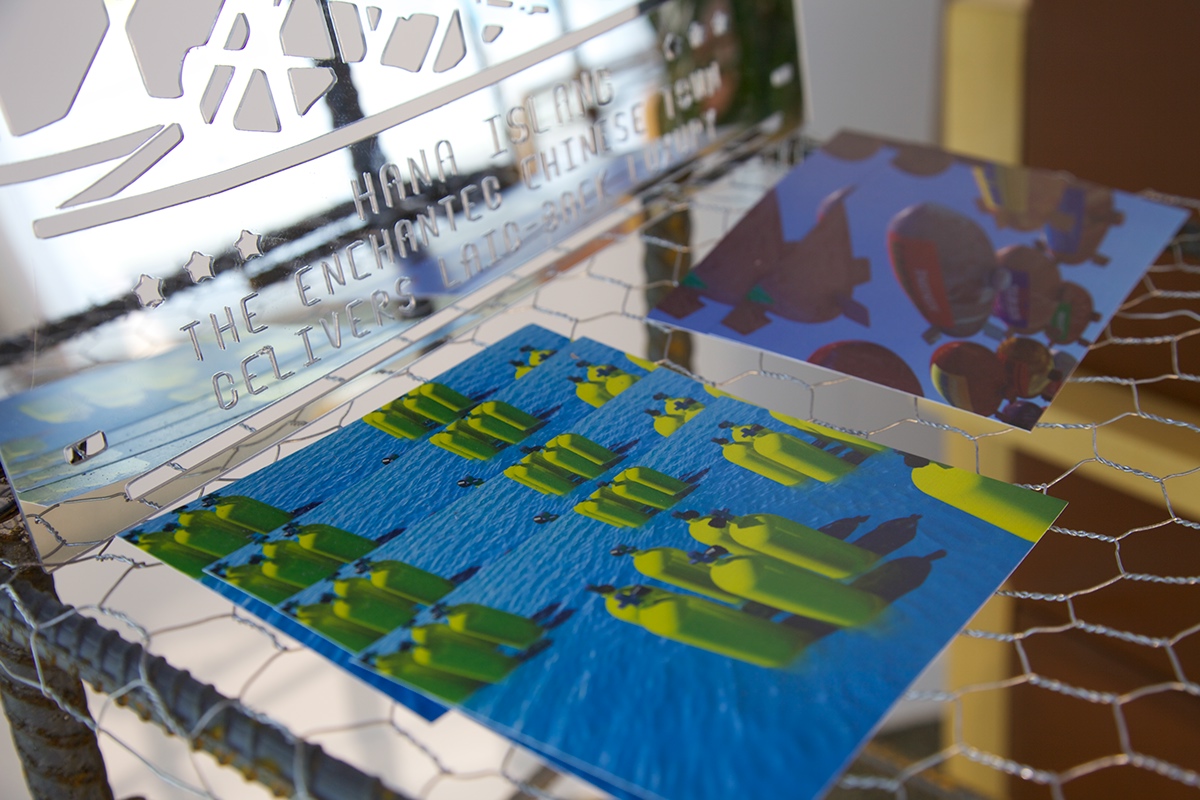

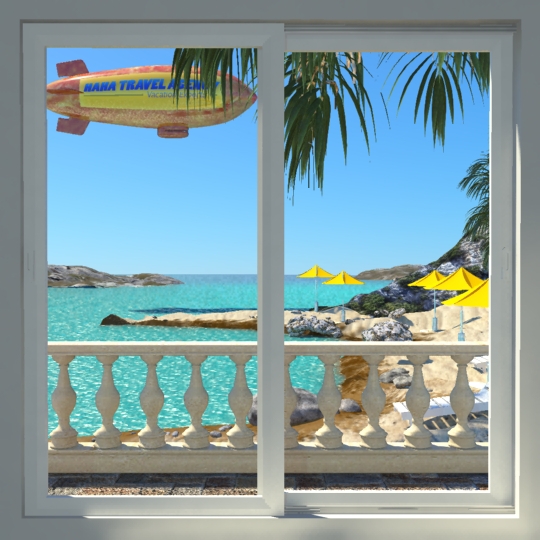
Hana Island Project- Projection on the left wall of the agency's room.
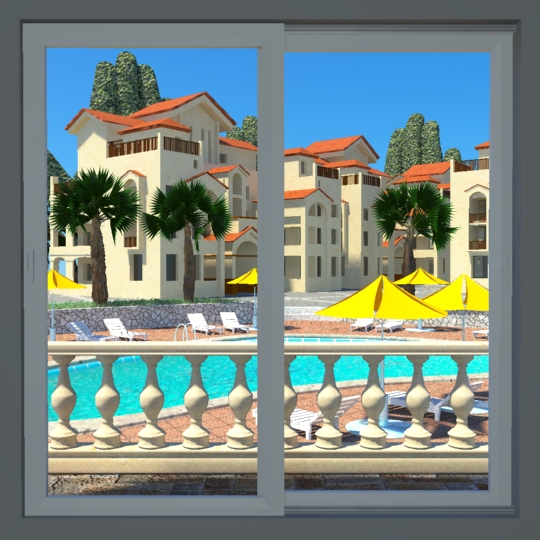
Hana Island Project- Projection on the right wall of the agency's room.
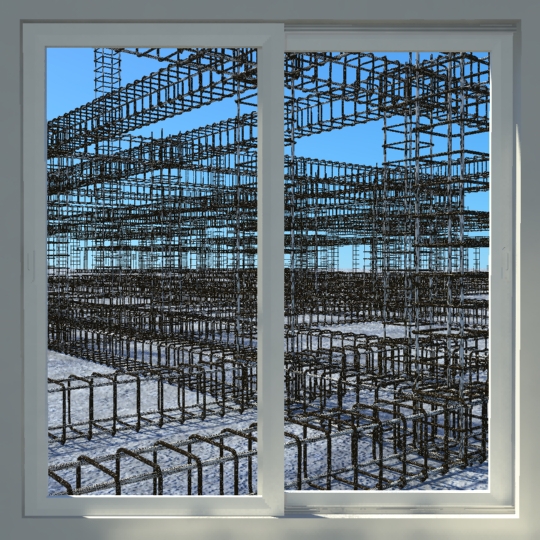
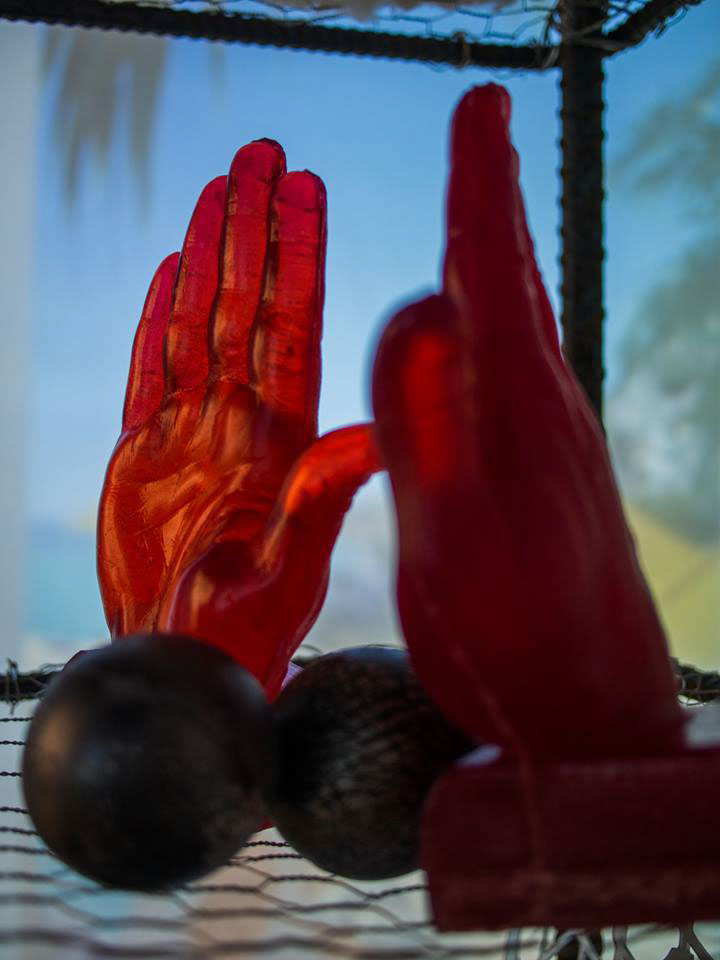
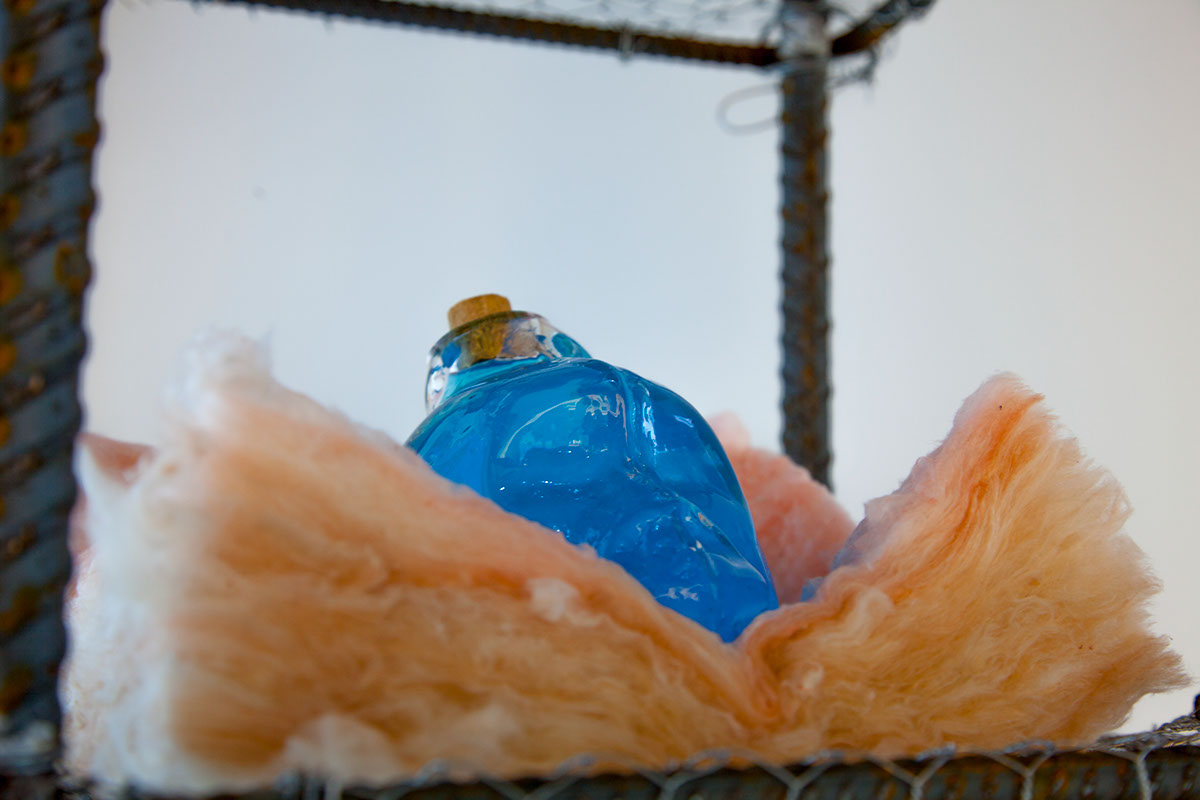
My thesis project, HANA Island Super Agency, is a mixed-media installation work, which simulates the reception area of a fake agency located in a holiday resort. There are extremely detailed CG animations projected on two of the installation’s walls; a grand logo is displayed on the monitor; and armchairs, indoor plants and an office carpet are employed to create a seemingly calm, peaceful, everyday scene. However, the ambience here is tainted with death, a world resembling “the smile of a corpse in a funeral home ”[1]. Meanwhile, I add some factors that are irrational or non-rational into the environment, such as rough rebar columns and glass fiber cottons as display shelves, weird souvenirs, and strange scenes flashing on the projected videos, all of which are designed to contrive an illusory scene for viewers, in order to let audiences feel those counterintuitive moments, and lead people to understand the underlying reality.
Some elements in this piece were extracted from a real Chinese tourist city named Hainan Island. The island was originally demarcated as one of China’s special economic zones based on the country’s economic reform policy; it is a place where people rapidly accumulate capital and power. Since the island has rich tourism resources, the tourism industry unites mass media making non-stop propaganda and manufacturing consumer demands in order to encourage people to consume . However, the island has been ruined by rapid and extreme development; many unfinished buildings have been left on the island after the housing bubble burst in 1990s. For me, the interesting point is how a dilapidated island has been figured as paradise by propaganda. It’s a case in which the boundaries between reality and spectacle have become extremely contorted.
Many elements in the piece have their symbolic meanings. The extremely flattened and detailed CG animation, which shows the contents of wonderful beaches and holiday villages behind sliding doors are contrived to express my comprehension about the term “hyperreal”. As George Ritzer says: “It is a simulation that is more real than real, more beautiful than beautiful, truer than true. In a hyperreal world there is no way of getting at the source, the original reality.”[2] In our routine life, people have been shrouded by simulation and image all the time, and all these simulacra are designed to manipulate people’s desire and provide the guidance for consumers. Captivating images and overloaded information have incurred one hyperreal world after another. According to George Ritzer, “The wide spread existence of simulations is a major reason for the erosion of the distinction between the real and the imaginary, the true and the false. . . to Baudrillard, as we have mentioned before, the true and real have ceased to exist, disappearing in an avalanche of simulations. This makes it dangerous to attempt to unmask simulations since what we are apt to find is that there is noting to be uncovered, or what is there is undecipherable; there is no “reality” or “truth” behind the simulated exterior.” [3]
A scene, which is full of reinforcement structure, flashes less than half second in both projected videos. It is too quick to see clearly, so that spectators are prone to believe it is their own hallucination or that something has gone wrong at that moment. The rebar is a very important symbol in my piece as I got my inspiration from the abandoned buildings a in the real-life Hainan Island. More importantly, for me the rebar world is an allusion to how the state apparatus operates: in other words, its model for governing citizens. It was presented as “striated space”[4]. The scene shows that standard lengths of reinforcing bars are superimposed and intertwined with each other. During the continuous expansion process, the space has been divided and partitioned in a complicated fashion, so that each position can be precisely defined, and its consistent order ensured. According to Deleuze, compared with “smooth space”[5], in striated space things are territorialized, assimilated and attributed, based on complex and variable standards.[6] Here, I created the scene to denote that the state apparatus has been ensuring that everything remains in control; different parts share in the homogeneous structure, guarantying the social order by establishing institution, statute, ideology, language and knowledge.
Strange souvenirs, which were furnished in my installation on rebar columns, are important aspects of the whole piece too. The souvenirs include monkey-head-shaped glass pots filled with energy drinks, postcards, sculpture souvenirs shaped as red hands and bowling balls. When I made all these souvenirs, I followed the logic of commodity production in reality, as all the gifts are made out of a mold and have been mass-produced. Glass is an ancient craft, which is associated with quality and much manual labor, but under the logic of commodity production, the concerns have been shifted on to quantities and efficiency rather than quality and the diversity of many ancient crafts, not just glass blowing, has been destroyed.
There is one type of postcard which I’ve designed, with airships in sausage shapes covered with advertisements, in order to reflect how media exercises its implicit violence and power through non-stop bombardment with information and the promotion of various symbols. Advertisements shape people’s awareness, preference, constructing individuals into subjects who are willing to consume. According to Baudrillard, “Simulations are seen as being obese, and contemporary systems are viewed as being “bloated with information” ( . . . ) producing too much meaning and obesity( . . . ) the media play a key role in the creation of a depthless, superficial world.”[7] Media manufactures different demands for consumers. Consumers lose their own values as they voluntarily follow media-oriented trends.
At the same time, mass media produces institutionalized and standardized welcoming smiles and attentive services. People can see advertisements simulating those intimate, personal communications happening between friends or loving couples, speaking in gentle voices or in introspective ways. Through these realistic simulations, media provides particular symbols representing the significance of concern to audiences. However, such concerns and attentive services seem to be more important than food for subsistence in the alienated and solitary society. Even if people understand all these services are based on the promoting of consumption, it would still be difficult to give up these plastic-like tender feelings.
I also associate scuba diving training and certification service with island tourism industry, and designed postcards “promoting” this content. Various training institutions have been replacing the traditional confined school environment, and have become deeper-seated control mechanisms, by providing special courses and one-to-one counseling. It seems as if there is more freedom, and young people seem to approve of being trained in this way. Many youth participate in continuing education voluntarily, in order to gain more abilities, which are recognized by society. Meanwhile, the training institutions have been molding teenagers’ perceptions and preferences to make them believe it is sacred and beneficial that their leisure time has been occupied .
Another recurring symbol in my piece is the erect palm. In my mind, this gesture has connotations with the forbidden, with the raised hand a symbol of oppressive force. Ironically, in HANA Island Super Agency, the palm also serves as one of those cheap tourist souvenirs. What I want to express here is that the mandatory power has been becoming subtler: from one that uses external repressive force it has gradually transformed into an implicit internal control, which is based on satisfying the appetite for excitement and amusement. Associated with the social reality in China, for people, the external oppressive power is obvious to feel and understand. Therefore, it is no longer an insidious enemy and it will be defeated and destroyed at the end. But it is hard for people to defeat their inner desires and adhere to them in order to make correct value judgments, when facing the dazzling array of consumer information. Baudrillard describes America as a desert implied lacking in depth and emotion. I feel China has been inevitably importing the American mode of consumption during the decades of implementing reform and opening policy. For me, it is an insidious and concealed power, which could make people to consume things beyond their needs, and it is more dangerous than the visible mandatory power.
I hope that my installation can stimulate spectators’ critical reflection about our hyperreal society and its power, which has been continuously executed on micro levels. The irrational or non-rational factors that I’ve created as parts of the installation are meant to provide an entry-point to refuse the reality with which we’re confronted, and hopefully this might resonate with the piece’s spectators.
[1] Jean Baudrillard, The Transparency of Evil : Essays on Extreme Phenomena (London ; New York : Verso, 1993),45.
[2] George Ritzer, Postmodern Social Theory, (Mcgraw-Hill Higher Education,1997),96.
[3] Ibid.,95-96.
[4] Deleuze, Guattari, A Thousand Plateaus: Capitalism and Schizophrenia, 474.
[5] Ibid., 474.
[6] Ibid., 475.
[7] George Ritzer, Postmodern Social Theory,103.

